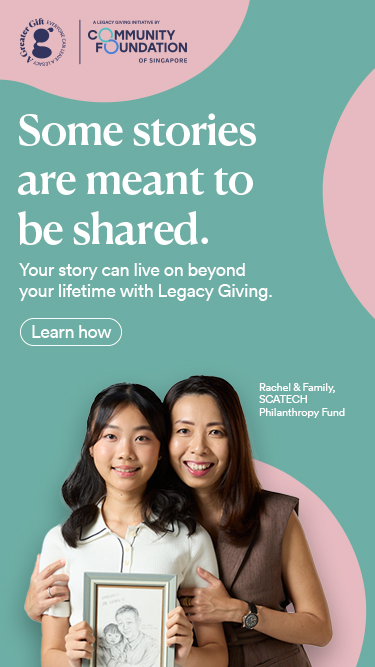Law firm Rajah & Tann donates $225k to ST School Pocket Money Fund and Dementia Singapore


Law firm Rajah & Tann (R&T) has contributed $225,000 to The Straits Times School Pocket Money Fund (STSPMF).
The donation was part of the firm’s 45th anniversary celebration on Thursday (May 5) at the Ritz-Carlton, Millenia Singapore, where it also gave $225,000 to charity Dementia Singapore.
Mr Zakir Hussain, a board trustee of STSPMF and ST’s Singapore editor, and Dementia Singapore chief executive Jason Foo jointly received a cheque from R&T managing partner Patrick Ang and Rajah & Tann Foundation chairman Rebecca Chew.
Mr Ang said: “The spirit of caring and giving back to society is part of R&T’s DNA, which we inherited from our founders T. T. Rajah and Tann Wee Tiong.”
A commemorative book about Rajah & Tann titled Duty of Care+ was also unveiled during the celebration on Thursday.
Written by former ST senior writer Cheong Suk-Wai, the book traces the law firm’s growth from its beginnings as a two-man partnership to the regional firm it is today.
“The Rajah & Tann story is essentially about how a group of talented lawyers came together to build a top-rated indigenous Singapore law firm, while holding fast to the principle of excellence with heart in the way they practised law and cared for others,” said Mr Ang.
Among Rajah & Tann’s notable alumni are T.T. Rajah’s son V. K. Rajah, who was Attorney-General from 2014 to 2017 and a former Judge of Appeal; Chief Justice Sundaresh Menon; former Attorney-General and current Judge of Appeal Justice Steven Chong; and current Judge of the Appellate Division Justice Quentin Loh.
STSPMF general manager Tan Bee Heong said the fund gave out almost $9 million to help more than 12,000 beneficiaries last year.
“This donation will help us continue our work in providing thousands of students from low-income families with school pocket money for meals and other schooling needs,” she added.
The STSPMF was started in 2000 as a community project by ST to help children from low-income families.
It has given out nearly $90 million to date and has helped more than 200,000 beneficiaries.
This article was originally published in The Straits Times here. Source: The Straits Times © SPH Media Limited. Permission required for reproduction.
Law firm Rajah & Tann (R&T) has contributed $225,000 to The Straits Times School Pocket Money Fund (STSPMF).
The donation was part of the firm’s 45th anniversary celebration on Thursday (May 5) at the Ritz-Carlton, Millenia Singapore, where it also gave $225,000 to charity Dementia Singapore.
Mr Zakir Hussain, a board trustee of STSPMF and ST’s Singapore editor, and Dementia Singapore chief executive Jason Foo jointly received a cheque from R&T managing partner Patrick Ang and Rajah & Tann Foundation chairman Rebecca Chew.
Mr Ang said: “The spirit of caring and giving back to society is part of R&T’s DNA, which we inherited from our founders T. T. Rajah and Tann Wee Tiong.”
A commemorative book about Rajah & Tann titled Duty of Care+ was also unveiled during the celebration on Thursday.
Written by former ST senior writer Cheong Suk-Wai, the book traces the law firm’s growth from its beginnings as a two-man partnership to the regional firm it is today.
“The Rajah & Tann story is essentially about how a group of talented lawyers came together to build a top-rated indigenous Singapore law firm, while holding fast to the principle of excellence with heart in the way they practised law and cared for others,” said Mr Ang.
Among Rajah & Tann’s notable alumni are T.T. Rajah’s son V. K. Rajah, who was Attorney-General from 2014 to 2017 and a former Judge of Appeal; Chief Justice Sundaresh Menon; former Attorney-General and current Judge of Appeal Justice Steven Chong; and current Judge of the Appellate Division Justice Quentin Loh.
STSPMF general manager Tan Bee Heong said the fund gave out almost $9 million to help more than 12,000 beneficiaries last year.
“This donation will help us continue our work in providing thousands of students from low-income families with school pocket money for meals and other schooling needs,” she added.
The STSPMF was started in 2000 as a community project by ST to help children from low-income families.
It has given out nearly $90 million to date and has helped more than 200,000 beneficiaries.
This article was originally published in The Straits Times here. Source: The Straits Times © SPH Media Limited. Permission required for reproduction.
- Related Topics For You: CHARITY STORIES, CHILDREN, DONOR STORIES, DONOR-ADVISED FUND, EDUCATION, NEWS, YOUTH

.jpg)

